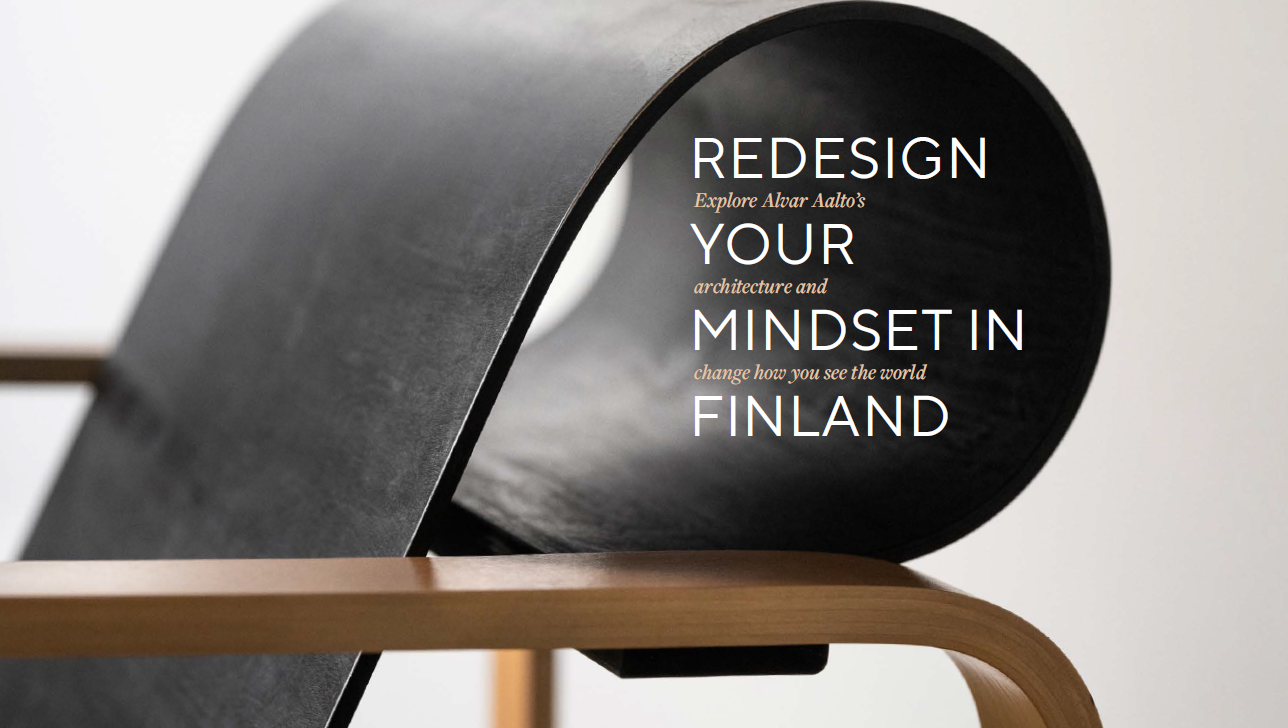
Welcome to the Alvar Aalto Route – a journey where the magic of architecture and design comes alive, inviting you to see the world through a redesigned lens. Alvar Aalto (1898–1976), the visionary of modern architecture, shaped spaces with a profoundly human approach. His creations are more than buildings; they are experiences that resonate with the soul. Scattered across Finland and beyond, they serve as gateways to a reimagined world.
In 2021, this extraordinary route was honoured with the prestigious certification as a Cultural Route of the Council of Europe, affirming its role in the rich tapestry of European heritage. The Alvar Aalto Route offers more than a journey through architectural masterpieces—it extends a warm invitation to immerse yourself in a space where design, nature, and the human spirit converge in harmony.
This catalogue is your guide to a curated collection of Aalto experiences. Each package is a thoughtfully designed adventure into Alvar Aalto’s world, seamlessly blending his iconic architecture with the unique flavours of local life. From serene Finnish landscapes to vibrant European Aalto destinations, these journeys offer something for everyone. Whether you’re a first-time visitor or a devoted admirer of Aalto’s work, we warmly welcome you—and continually seek new partners to enrich the experience.
Step into spaces that defy the ordinary, where every curve, every material, and every detail tells a story that redefines how you perceive the world around you. This is the essence of the Alvar Aalto Route: an invitation to rediscover beauty, functionality, and the interconnectedness of life through the lens of one of modern architecture’s greatest minds.
Let us help you navigate this adventure and uncover how Aalto’s vision can transform not just physical spaces but also the way you view the world itself.
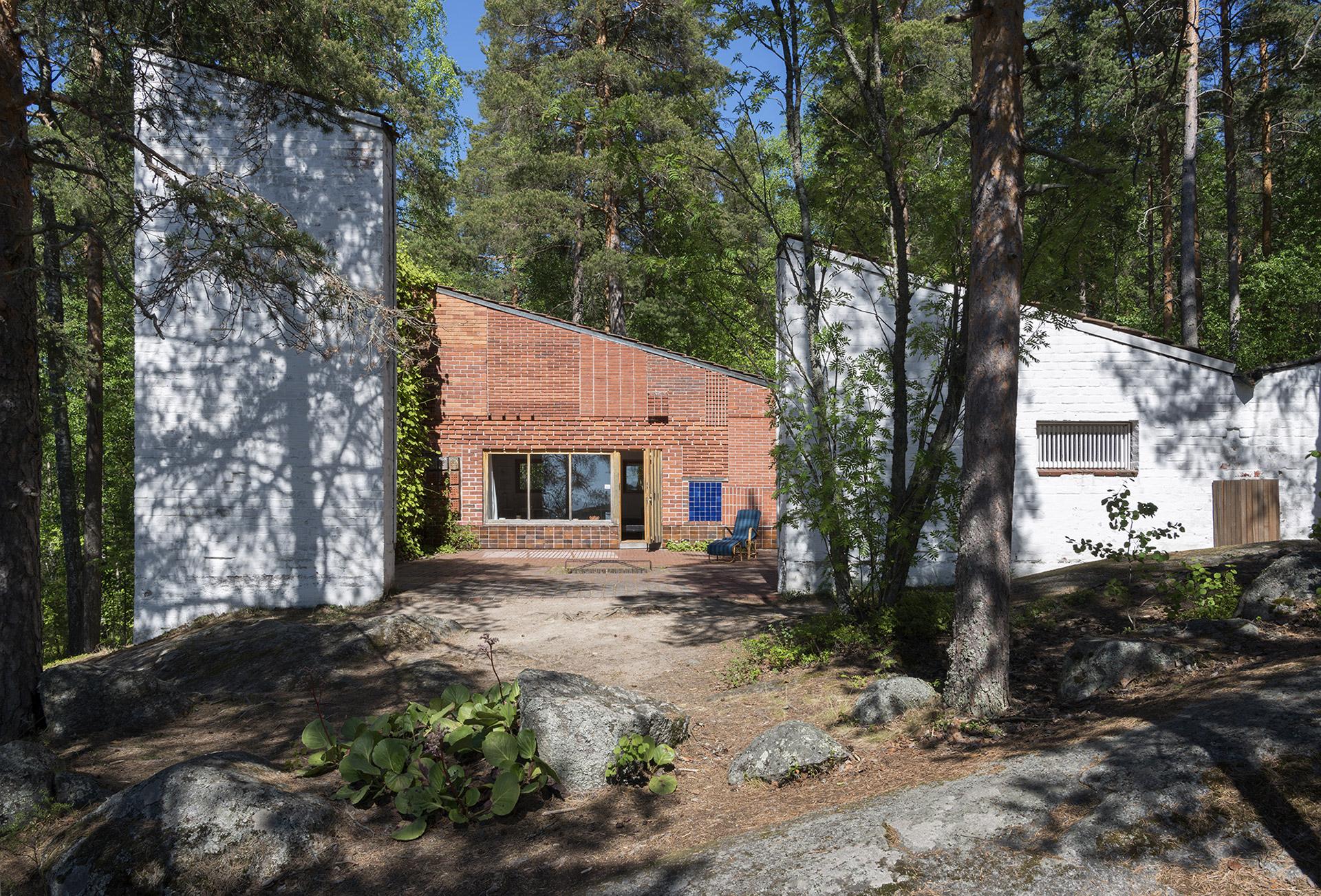
Embark on a country-spanning odyssey to discover the heart and soul of Alvar Aalto’s architectural legacy. Begin in Turku, where Aalto’s modernistic early works stand as monuments to his evolving style. Find yourself in Helsinki, where the iconic Finlandia Hall and the Academic Bookstore exemplify his philosophy of form following function. In Jyväskylä, the Aalto2 Museum awaits, a space where Aalto’s genius blurs the lines between practicality and artistry.
Journey to Säynätsalo to admire the Town Hall, a beacon of community and design, and explore the Muuratsalo Experimental House, a canvas of Aalto’s daring creativity. Venture to Kauttua Ironworks in Southwest Finland, a magnificent home to six Aalto structures, including the Terraced house and riverside sauna. Finish up at Villa Mairea, a residential marvel that harmonises with the natural world. This tour is a true tribute to Aalto’s vision, a chance to see the built environment through his transformative lens.
This five-day tour commences in Turku with Aalto’s first modernist works and progresses throug Helsinki’s iconic landmarks, such as the Finlandia Hall and the Academic Bookstore. The tour then ventures to the historically rich Kauttua Ironworks, followed by visits to Säynätsalo Town Hall and the Muuratsalo Experimental House. The excursion concludes with a tranquil stay at Villa Mairea, a serene
architectural haven.
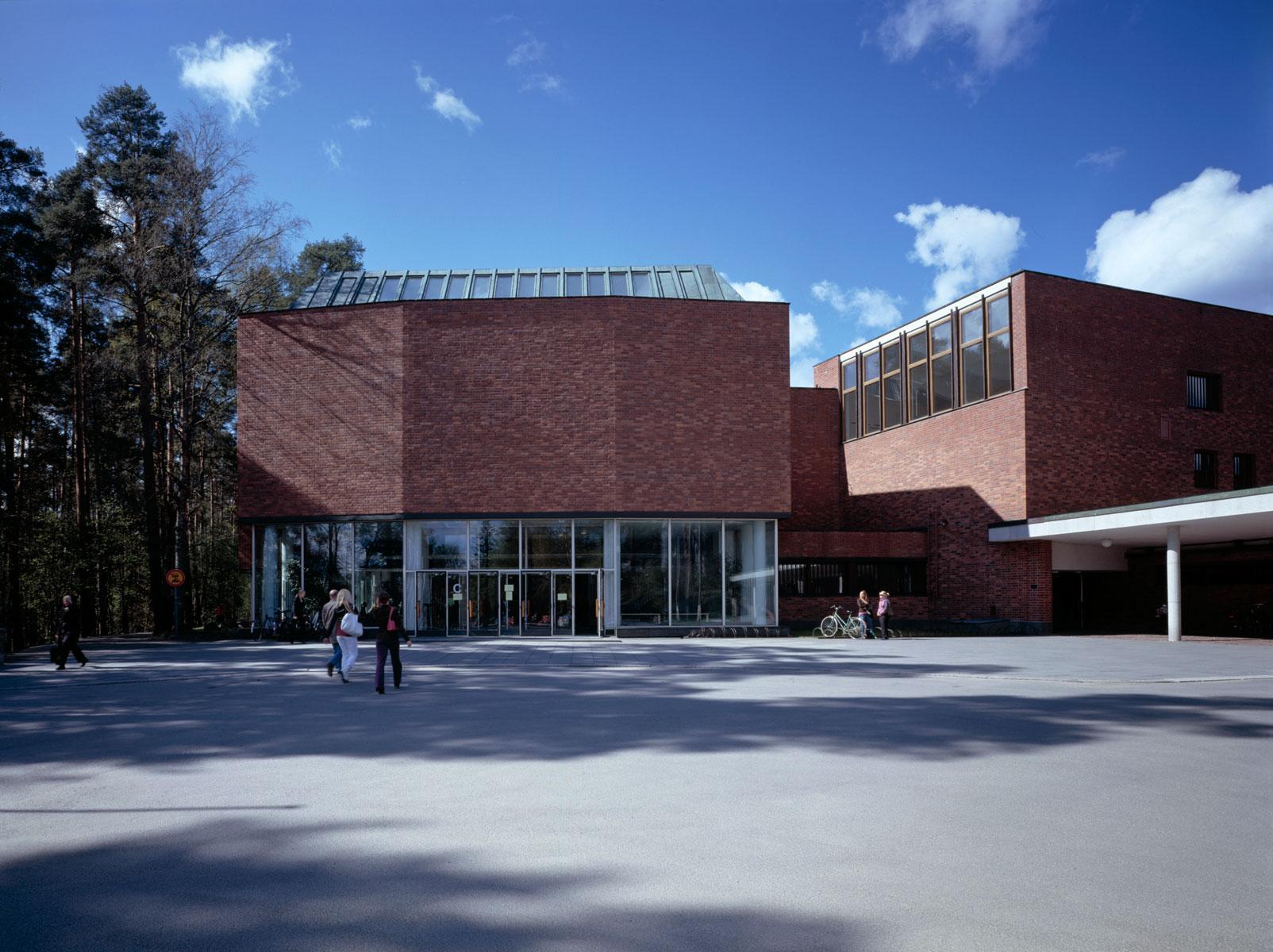
This experience is an intimate exploration of Aalto’s structural poetry: the University of Jyväskylä Campus, a testament to his genius. The serene Säynätsalo Town Hall. Then add the architectural allure of the Jyväskylä City Theatre, a stage for cultural narratives, and the spiritual resonance of Muurame Church.
Each visit isn’t to a site but to a story—a narrative shaped by Aalto’s dedication to innovation and elegance. Dive into the depths of architectural marvels and discover spaces that redefine the essence of form and function.
Discover Aalto’s diverse architectural phases in a three-day tour of the Jyväskylä region. From the early classicism to functionalism and from renowned Säynätsalo Town Hall’s architecture in brick to the Jyväskylä City Theatre’s monumentalism, this tour blends Aalto’s heritage with the Petäjävesi Old
Church’s heritage and the natural beauty of Lakeland, complemented by local hospitality.
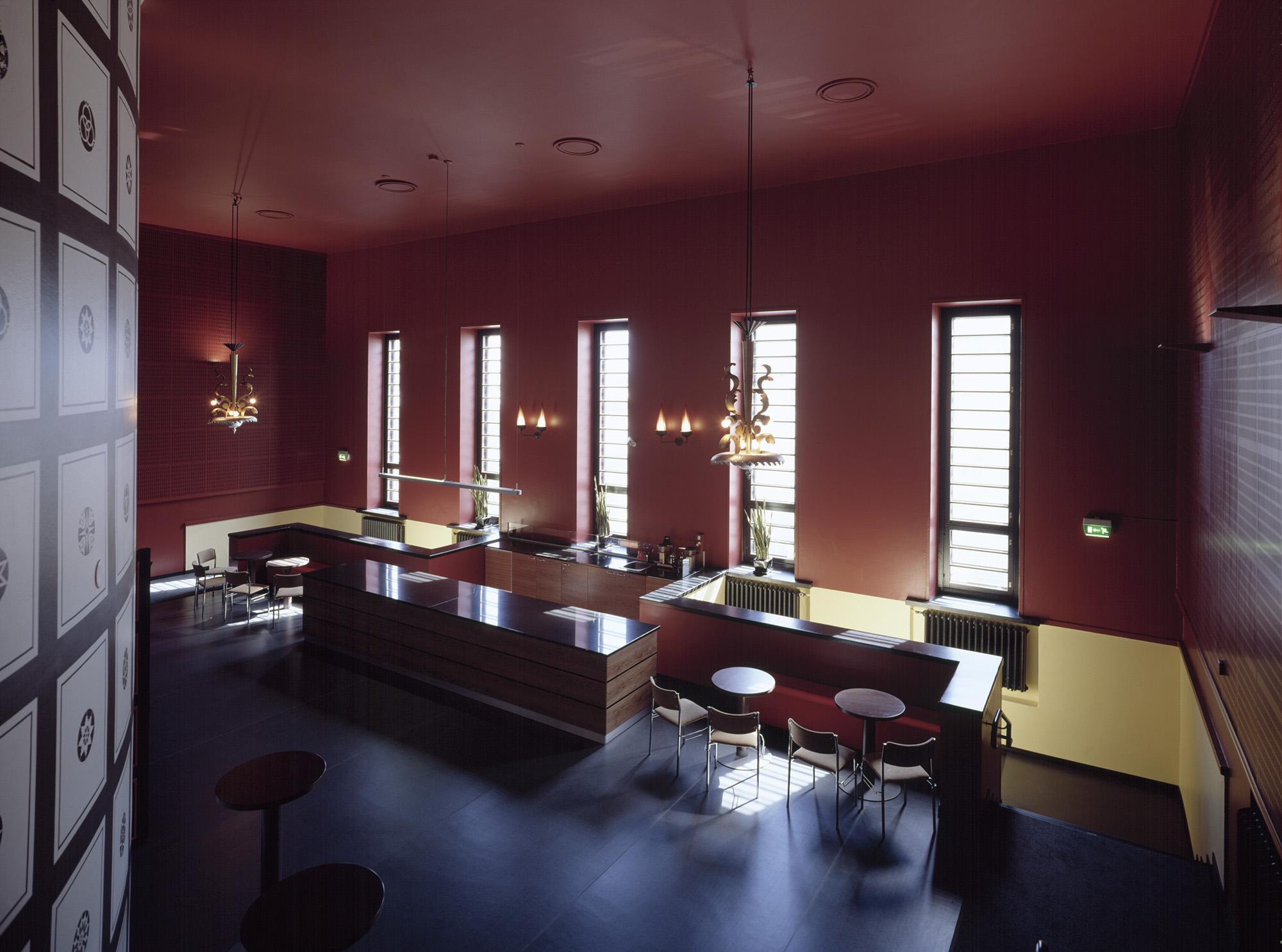
Jyväskylä Workers’ club building was the first notable public building that Alvar Aalto got to design after his graduation with Aino Aalto. Aalto was given the design commission for the new building in the city centre by the Jyväskylä Workers’ Association in 1924. The plans for the building were made in 1924 and it erected the following year. Aino and Alvar Aalto also designed the furniture, light fixtures, and fittings specially for this building.
This building also marked Aalto’s breakthrough and it is one of the principal works of Alvar Aalto’s Classical period. Workers’ club is also one of the most historically important building of its time. It was protected by law in the city plan already at the beginning of the 1970’s. The provincial government of Central Finland protected the building in 1978 and finally the Finnish Government protected the building in 1986.
The lower level of the building is basically a glazed colonnade containing a restaurant, two café rooms, and the entrance hall to the theatre. A monumental staircase leads up to the upper floor. The largely windowless upper floor contained an auditorium used for political assemblies and as a theatre with stage, parterre, balconies, and foyer. These facilities were used by the workers’ theatre and later by the city theatre until the new city theatre completed in 1982. Nowadays the building is used as a venue place for meetings and special occasions.
The foundation of the Jyväskylä Workers’ club were laid on 22nd of September in 1924. Into the stone foundation they hid old issues of their Työnvoima -magazine and the workers club 35-Year History, pictures and money.
When the Workers’ club completed it had a distinctively different character in the street scene of Jyväskylä. The building represents typical 1920s Nordic Classicism and it has features from Renaissance architecture. Such as the Palladian windows, the medallions details and the balustrades which dominate the facade. Also the restaurant space inside the building has a round atrium shape. The earliest sketches also show a large, colonnaded forecourt but it was not built.
Workers’ club has been refurbished and some changes have been made over the years. For example the restaurant spaces have later been fully remodelled. More restoration and repair work were done in the 1980’s and some parts of the building were brought back closer to the historically accurate condition. The latest renovation was in 2008 when the theatre space Aalto-sali was renovated.
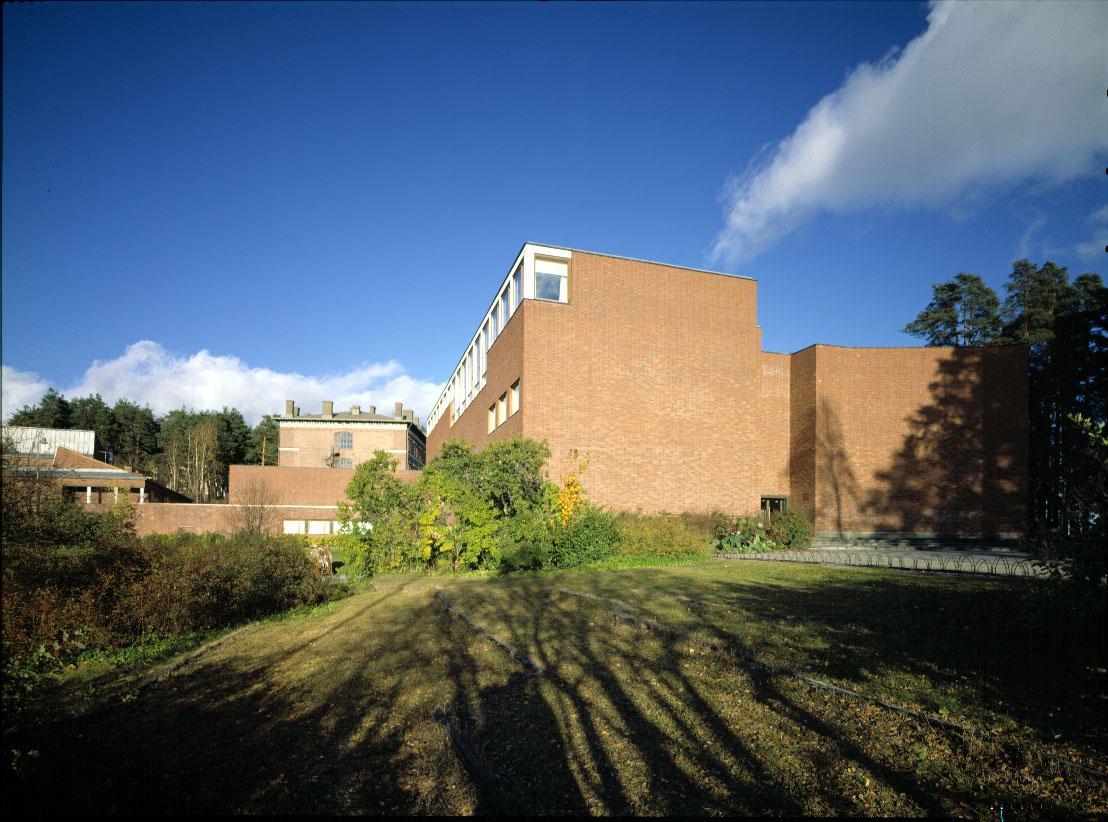
The first buildings at the Seminar Hill were built already in 1880’s. Konstantin Kiseleff’s redbrick buildings are the oldest buildings in the area. Seminar Hill and the Jyväskylä University Campus area is nowadays protected by law. The University area represents many historical layers and it is therefore considered to be one of the areas richness as well. It is also considered to be a good example of an area where modern and older buildings go together seamlessly.
The Jyväskylä University campus is largely made up of the buildings designed by Alvar Aalto for the Jyväskylä College of Education, later the University of Jyväskylä, in the 1950s. Aalto won the architectural competition with his URBS proposal in 1951. Various buildings were then completed all the way to the 1970’s based on Aalto’s plan. The proposal name URBS refers to a city and therefore all the buildings were placed to the area in a city-like form.
The layout, based on the winning competition proposal, is derived from the American campus principle. Originally, it consisted of buildings designed to serve both the teaching and administration of the College, including the main building and library, the teaching-practice school, the refectory and hall of residence, two gymnastics buildings, an indoor swimming pool built by the student union and subsequently extended several times, plus a residential building for the staff and a boiler house. Aalto’s original scheme forms a crescent or ’horse-shoe’ around the sports ground.
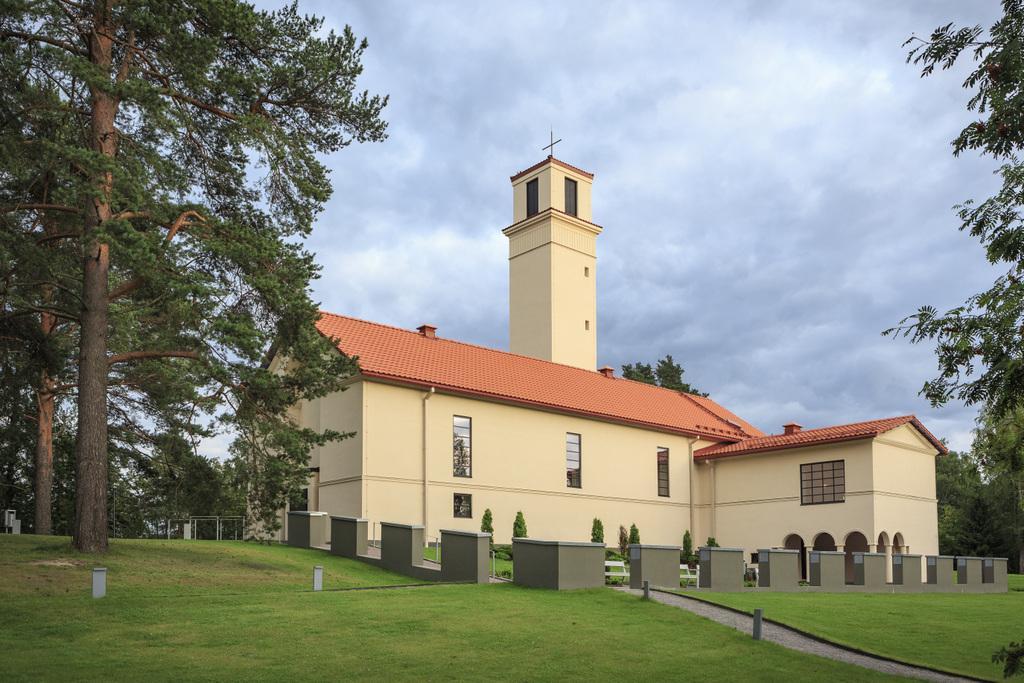
Alvar Aalto designed several church plans in 1920’s and Muurame church is the only one that was realised. Muurame church is considered to be a interphase in Aalto’s career. After Muurame church, Aalto gradually moved on from classism to functionalism.
The village of Muurame lies a few miles south of Jyväskylä, the town where Aalto opened his first architectural practice in 1923. It was only natural for the parish council to commission its new church from the closest qualified architect. Alvar Aalto had made his first trip to Italy in 1924, and his travel impressions are much in evidence in the church of Muurame.
Muurame church represents Nordic Classicism. Muurame church is located on a ridge and it is an important part of the cultural heritage in the area. The church is a single-aisle basilica with a tall campanile on one side of the rounded chancel. The interior has a barrel vault over a system of joists, the parish hall opens as a side chapel to the right of the chancel. A staircase leads down from this room to an exit with a loggia, which in Aalto´s original plan is surrounded by a rose garden.
Aino and Alvar Aalto designed the furnishings for the church together. The furnishings, designed fairly late in the project, took on elements of Aalto´s conversion to Modernism, and Aalto used Poul Henningsen lamps for interior lighting.
The interior of the Muurame church has undergone several changes over the years. Last time the interiors and exteriors of the Muurame church were renovated in 2016. The aim of the renovation was to restore the church to its original appearance. During the renovation, also Poul Hennigsen’s light fixtures were returned to the church. The latest renovation is considered to be successful.
William Lönnberg was commissioned to paint the altarpiece in 1929.
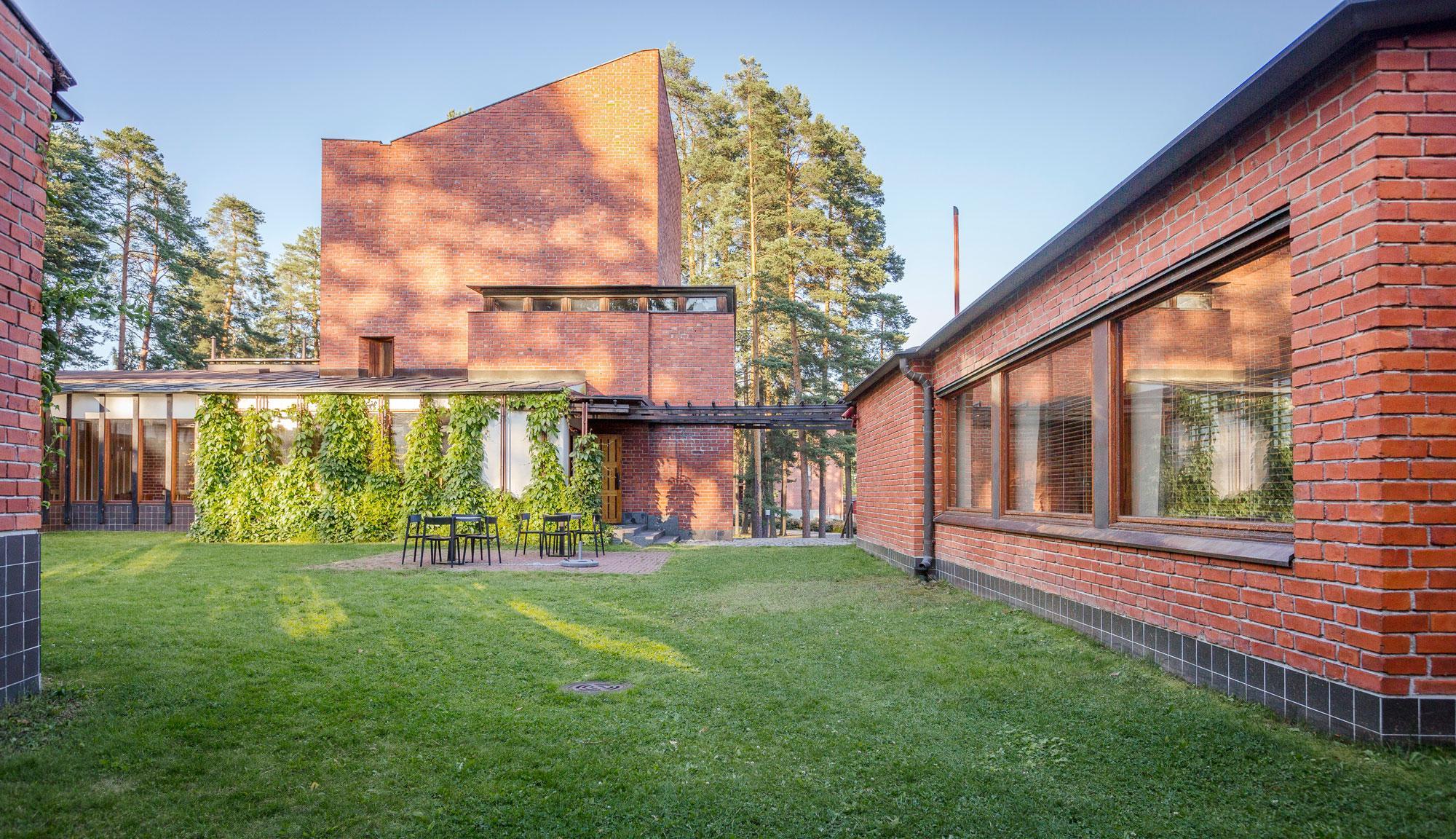
Travel in the sceneries from the various phases in the life of Alvar Aalto, from Seinäjoki via Kuortane and Alajärvi to Jyväskylä in the lake district of Finland. See the master’s birthplace and family grave, some of his most famous competition works as well as his early and later works.
Alvar Aalto designed a world-famous centre of administrative and cultural buildings in Seinäjoki. The landmark of the Aalto centre, the Cross of the Plains Church, soars to a height of approx. 65 metres. The renovated Aalto Library exhibits the world’s biggest private collection of Aalto glassware.
The architect was born in Kuortane and he used to spend his summers in Alajärvi, which is the home for the first buildings designed by the young architect student and for the last creation of Aalto’s office. In Alajärvi, the tour participants can also visit the recently renovated Villa Väinölä, the house that Alvar Aalto designed for his brother. The countryside provided Alvar Aalto with a setting for relaxation during his hectic creative period.
The Jyväskylä region contains more buildings designed by the master architect than any other region in the entire world. Among as many as 28 attractions, you can choose for example the Alvar Aalto Museum, Muurame Church and Säynätsalo Town Hall, which is considered Aalto’s most prominent work in the red brick era. Alvar Aalto also went to school, started a family and launched his prestigious career in Jyväskylä.
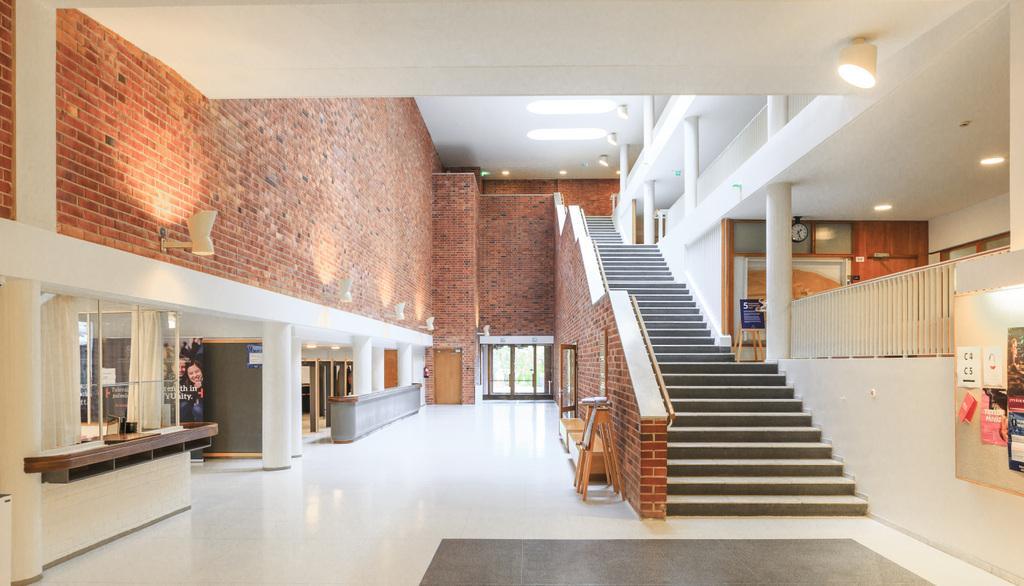
This 5-day tour explores Alvar Aalto’s architectural masterpieces in Helsinki, Jyväskylä, and Seinäjoki, offering guided tours of iconic sites like the Seinäjoki Civic Centre, Säynätsalo Town Hall, and Alvar Aalto Museum. Starting in Helsinki with a walking tour, the journey continues to Seinäjoki for an exploration of Aalto’s cultural hub and then to Jyväskylä, including visits to Muurame Church and Muuratsalo Experimental House. Accommodations are provided in carefully selected hotels, with meals included.
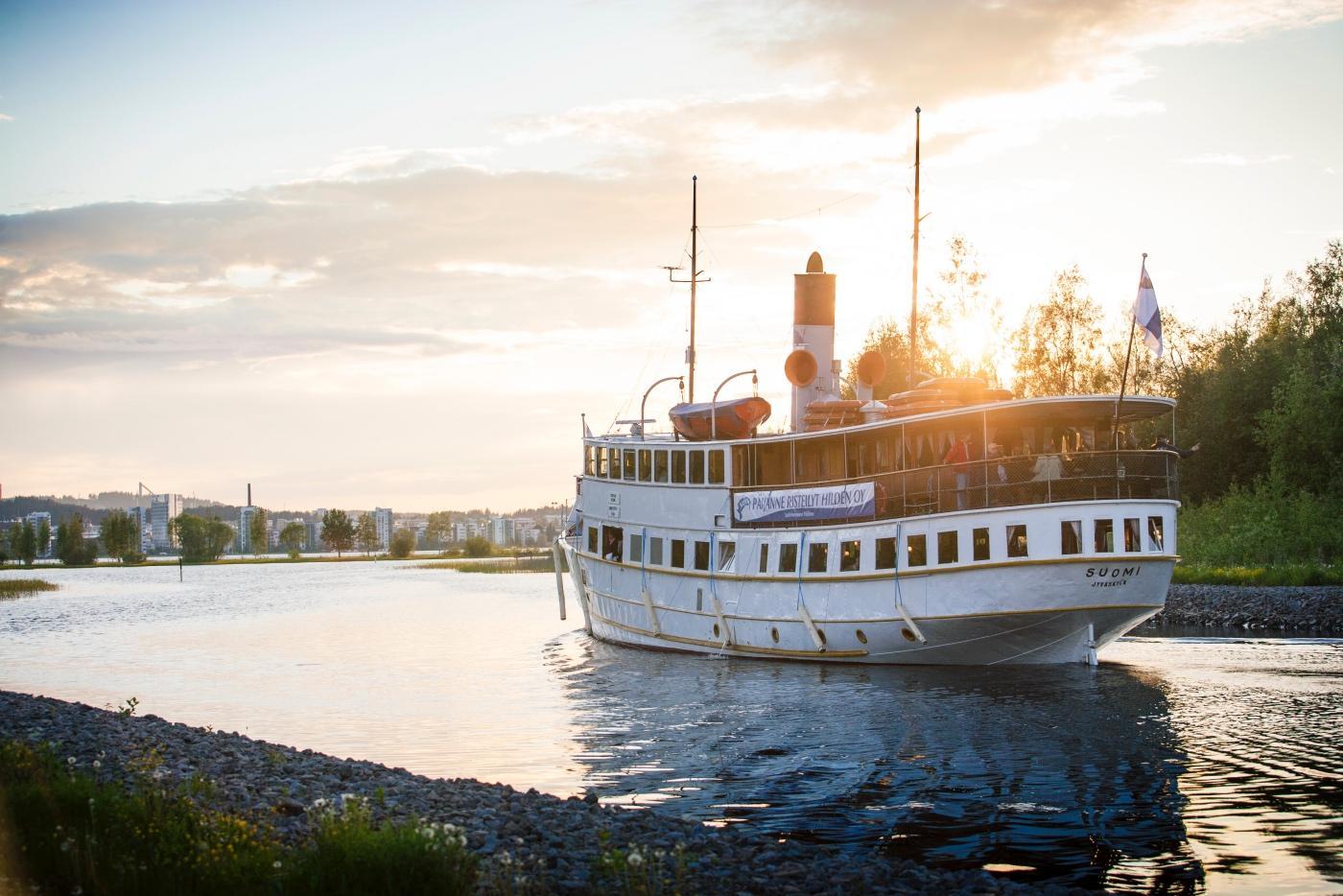
Welcome to experience the Alvar Aalto Cruise on Lake Päijänne. The most well-known Finnish architect Alvar Aalto used to spend his time in the beautiful Säynätsalo area where he also used to have his summer house – designed by himself of course.
During this trip you will get to know Alvar Aalto’s history and the Säynätasalo Town Hall which was designed by Aalto. Did you know that Alvar Aalto often travelled to Säynätsalo by the same boat S/S Suomi?
The steamboat s/s Suomi departs from Jyväskylä and arrives to Säynätsalo dock where the guide is waiting for you. Together with the guide you’ll find your way to the Säynätsalo Town Hall where the guide will tell you more about Aalto’s unique design. After the tour you’ll head back to Jyväskylä by local bus nro 16.
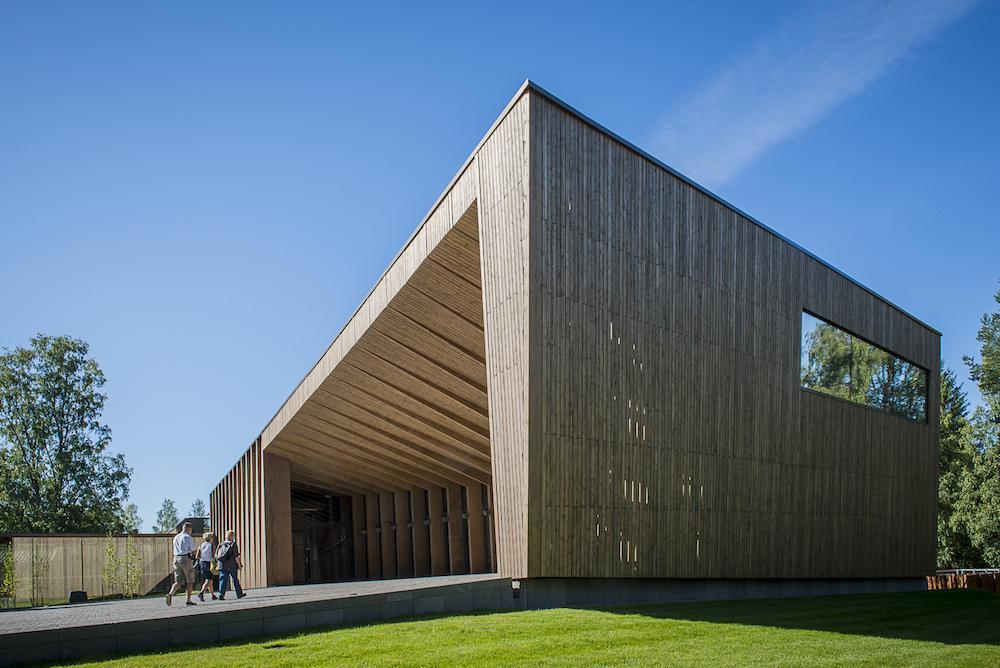
What significance does art, architecture and design have for Finland and its people? What is the relationship between art, architecture and design and the forest industry, the traditional lifeline of the Finnish economy? How close to nature is it possible for Finnish architecture and design to get?
The Alvar and Gösta tour offers, on a human scale, a unique insight into the Finnish way of living in close rela-tionship with nature. The tour offers unforgettable experiences for fans of culture and those who would like to learn more about the Finnish way of life in the midst of the most beautiful Central Finland landscapes, where lakes, rivers and forests are ever present.

The invitational competition for Säynätsalo Town Hall was held in 1949. Aalto won the competition with an entry marked ‘Curia’, and was immediately commissioned to prepare working drawings. Completed in 1952, the building is one of Aalto’s most admired designs. The dominant element of the building is the council chamber, which soars tower-like above the complex. The main material used for the exterior as well as for the representative areas of the interior is bare red brick.
The building has a variety of functions. Aalto laid out four two-storey wings around a square courtyard set one storey higher than its surroundings. The raised courtyard provides access to the former municipal administrative offices and the library, which continues to serve as the local library for Säynätsalo. The office spaces now function as art galleries and exhibition areas. The municipal officials’ residences located in the west wing of the building now primarily serve as accommodation. The spaces on the lowest floor still serve their original purpose as rental commercial spaces for local businesses. During the summer, the Town Hall keeps its doors open daily for visitors, and guided tours are conducted in Finnish and English.
Säynätsalo Town Hall offers guest rooms and apartments for overnight stay and also for longer-term accommodation for researchers and students. The Aalto Residency Programme is an international residency programme focused on architecture and design. The residence is designed mainly for students, researchers, or professionals of architecture and design, however representatives of other arts and sciences are also welcome. The residence apartments are located in the residential wing of the town hall. Read more about the Aalto Residency Programme here.
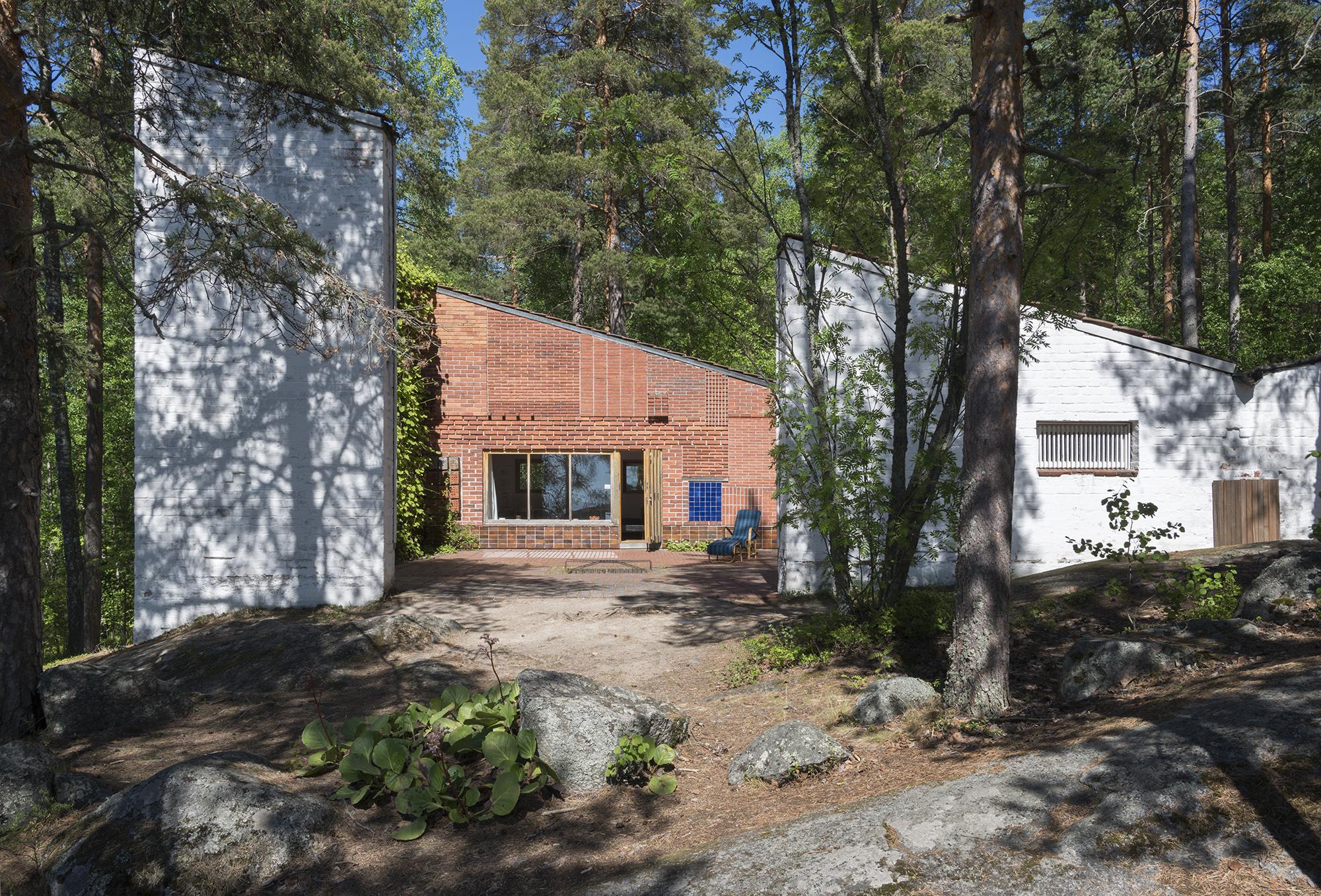
The Muuratsalo Experimental House, Alvar and Elissa Aalto’s summer home, stands on the western shore of the island of Muuratsalo in Lake Päijänne. Besides the house itself, also in the grounds are a woodshed and smoke sauna.
The Experimental House consists of the main building (1952–54) and a guestroom-wing (1953). The L-shaped main building and walls form an internal courtyard which is open to the south and west. In the courtyard, the house façade material ranges from white-painted plastered wall to red brick. The heart of the patio is an open fireplace in the centre of the courtyard.
The smoke sauna is in a sandy cove on the lake shore. It was built on rocks, with logs from trees felled on site. Besides the steam room, the sauna building also has a changing room. Alvar Aalto made sketches for the sauna and Elissa Aalto created the working drawings.
Aalto designed the motorboat Nemo propheta in patria, which Elissa and Alvar Aalto used to get to the Experimental House in the summer. The boat is now in the Alvar Aalto Foundation’s collection.
Find out more about the architecture of the building on the Alvar Aalto Foundation website. The Muuratsalo Experimental House can only be visited in the summer. Visits and guided tours are managed by the Aalto2 Museum Centre.










